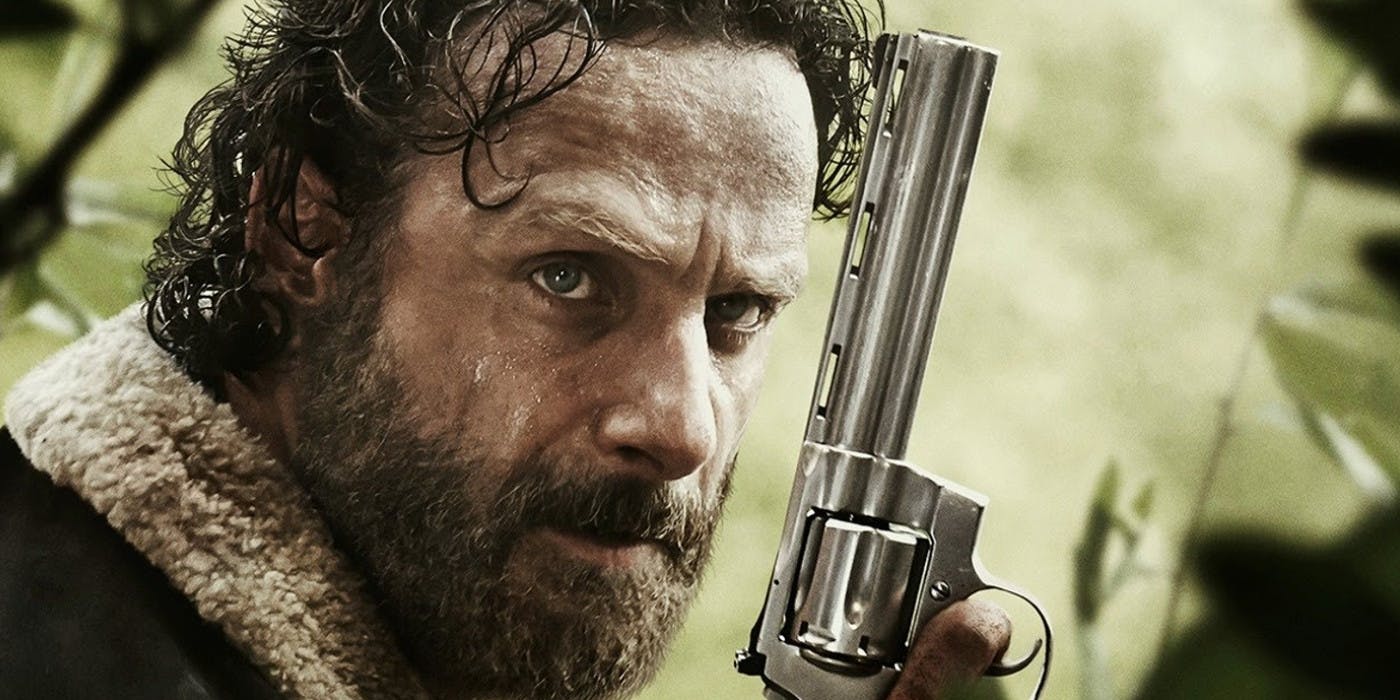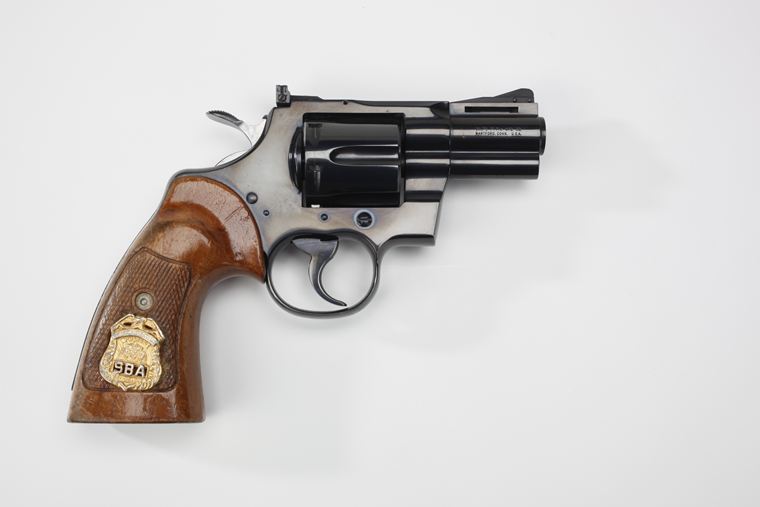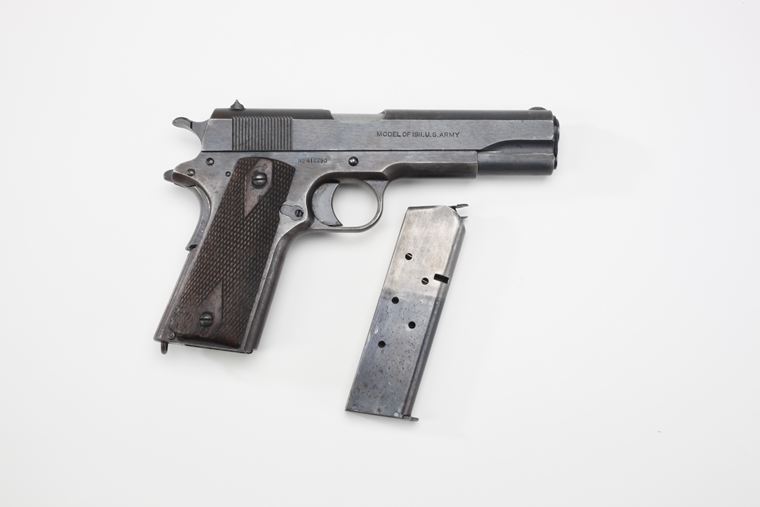History Of: The Colt Python
Jeff Williamson 08.22.18

The revolver, as a personal defense weapon, is virtually eclipsed in the modern age of polymer framed, high capacity 9mm semi autos. These so called wondernines have made wheel-guns appear to some as a developmental dead end. To others, however, the six (more or less) shooter is still considered the evolutionary apex. To these seemingly neo luddites, the most sought-after object of desire is the discontinued Colt Python.
To many a youngin’ this model has received a pop culture revival in AMC’s THE WALKING DEAD with the character Rick Grimes using the treasured revolver, often aiming it with a muzzle droop that inspires fits of apoplexy in a few professional pistol shooters. While marginal in the entertainment world, the Python specifically is experiencing a marked demand and increased prices to positively pearl clutching levels. The model has become the ’57 Chevy of American gun-making: no Colt collection is complete without [at least] one and brandishing one at the range often elicits covetous gasps and barely restrained salivating streams.

Colt introduced the Python revolver in 1955: the same year Smith & Wesson introduced their own iconicModel 29 in .44 magnum: the 1950’s were a wonderful time for American cars and revolvers it seems. While many a Smith was returned barely used, the Python offered a “magnum” that could be fired without flinch inducing trauma. Production ceased in 1999 with only custom orders available until 2005 when the last, the 50th anniversary, was turned out supposedly engraved with an effusion of gold inlay. Wherever that example is, if it truly exists, no one is talking.
Anyone who has fired or handled an older Colt revolver is well aware of the quality and lock up. The latter, in fact, on a well-cared for piece feels like a safe: all moving pieces click into a single chunk of steel and surety. No other revolver ever feels quite so solid: even the best of S&W revolvers have a little wiggle in lock up. The closest, modern equivalent, according to some, may be a brand new Ruger, but Colt had them all beat when it comes to crisp trigger pull.
The Python was, from its theoretical inception, designed to be a .38 Special, heavy-duty service or target revolver on Colt’s I-frame, like the Trooper (1953-1985). Thankfully, someone decided with all the weight (almost 3 pounds) going into it, to up the caliber to .357 Magnum. It could still serve as a .38 target revolver but also could be used for hunting, law enforcement (which is what the magnum cartridge was initially designed for in 1934) and even the military – Python’s first pseudonym was the “Combat Magnum.” In a discomforting acceptance of size matters, its versatility is limited only by the choice of barrel lengths: 2.5”, 3”, 4”, 6” and 8.” Other than that, every Python had the same level of custom hand fitting and finish.

This attention to quality, as maintained by professionally vetted, *real* smiths, is what may have led to the demise of the snake models: Diamondback (1966-1988), King Cobra (1986-1998) and Anaconda (1990-2003). Building a quality pistol like the Colt Python today is a lot like going back to the Moon: sure, it can be done, but who is going to pay for it? Whether it is because of the devaluation of the dollar, less expensive competition or a combination of these and other factors, making something of this quality is just too expensive to be priced competitively. Or so the argument goes. Sure, there is a market for ultra-expensive firearms, but it is a fickle beast that Colt has not successfully tamed, let alone kept it from biting at their horse like haunches. There are several factors for this.
The company’s relationship with the civilian market has always been a bit awkward. Even in the days Sam ran it, the focus was on military contracts first and the private market second. This worked well at times with the Single Action Army (1873 Peacemaker) and the 1911. Yet those markets did not last: there were so many 1911s made in World War II that the US cancelled all orders in 1945 and simply used its reserve stocks for the next 40 years before switching to the 9mm Beretta. The company managed to survive on the monopoly of the AR-15/M16 orders, but in 1985 Colt workers, members of the United Auto Workers union, went on strike. For five years. Replacement labor was not as skilled and production quality declined. So much so that Colt lost its primary client, the US military in 1988 when the M16 contract was given to FNH.

With the simultaneous decline in military contracts and skilled labor there was also Colt’s marketing strategy. Their premium pricing for new guns is maintained by distributor contracts. This led to too many consumers wondering if the “pony stamp” is worth the 10-20+% premium adjustment. Especially now that virtually everyone (except Glock) makes a 1911 and an AR. Of course, Colt’s DO maintain their value longer, but the initial buy in is where a lot of consumers look. This is an onus that both producer and buyer hold in the market: it is what drives quality down in virtually every manufacturing endeavor.
Yet Colt has struggled to figure this out. By the end of the 20th century the company earned a reputation of lowered quality while maintaining the higher prices. They had not had an exclusive military contract for years, and yet maintained their pricing rules as if the government arsenals were at their beck and call. This has yet to prevent the company from being led to at least one bankruptcy.
To make matters more exciting, by the 1990’s the political climate had begun the phase of radical bipolarization so enjoyed today and several ill-advised comments by Colt representatives challenging citizens “right” to certain firearms and magazine capacities created consumer boycotts. New models such as the Double Eagle and the ill-fated Colt 2000 failed to inspire sales. One would think that the one place Colt did something almost exclusively right – their snake gun line – would be appreciated as a saving grace. Instead, by 2005 they ostensibly ceased modern revolver production.
This was the best thing that could happen to Colt revolver owners as the market price of their guns began to swell like the national debt. Without new models ever coming off now scrapped machinery, the limited supply of units experienced an increase in demand. How limited? Best guesstimates from serial number data on the Python is 600-700,000 units. In the world.
Not all revolvers experienced a surge in market price of course. Many Official Police, Police Positives even Troopers merely doubled to what Pythons were getting before the bubble. Many “snake guns” tripled. And the Pythons, well some of them quintupled in the space of 10 years. It is enough to make 401k holders disgusted. Thoughts of getting a time machine to go back and tell one’s earlier self: “Forget plastics. Pythons. And Bitcoins. And Britney will be fine, but someone should really check in on Lindsay and Miley.”
Python prices will [probably] stabilize eventually. Yet they have achieved the status of older discontinued guns like Lugers and Broomhandles: monuments to bygone times. Even if Colt were to start making them again, no one appears to expect they will be the same. This scenario is currently playing out with Colt’s 2017 re-release of the snub-nosed Cobra. Lackluster sales of this new production, despite whatever level of production quality is attained, appears to suggest that when established revolver production – like friendships – is no longer maintained, trust is difficult to restore. It is not as if Taurus and S&W are not still selling their revolvers, after all.

